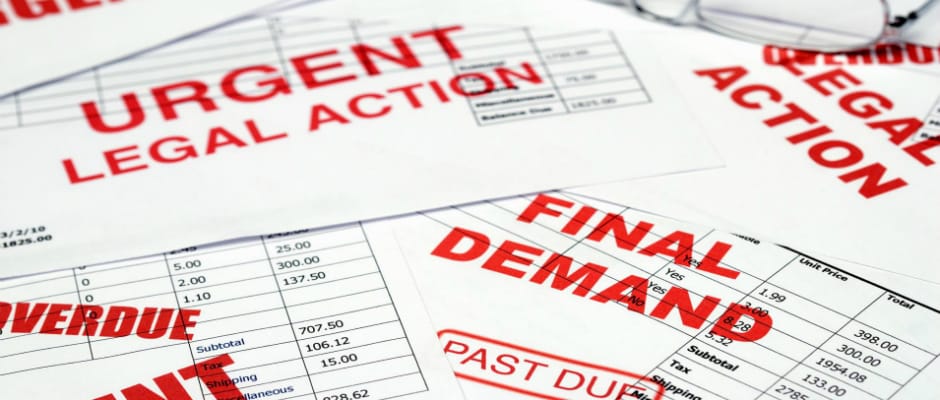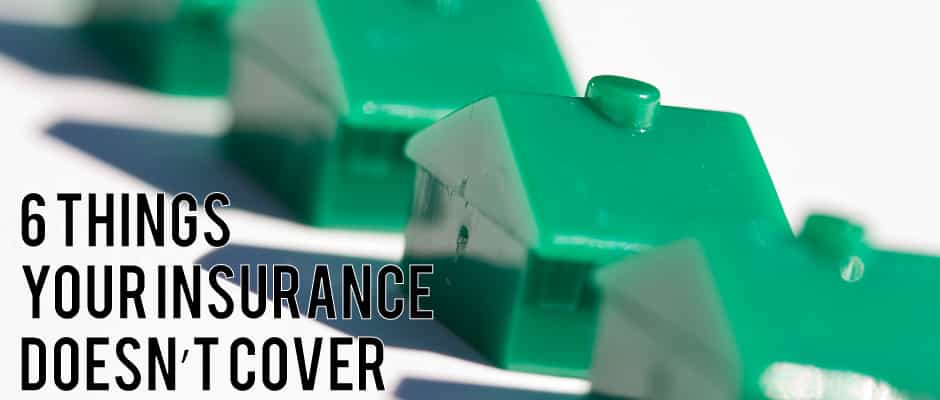
6 Big Things Your Homeowners Insurance Doesn’t Cover
Do you know exactly what your homeowners insurance covers? If not, take a close look at your policy. Your insurance company will recoup costs for most accidents and disasters, but some things just aren’t covered.
Understanding what your homeowners insurance doesn’t cover and why can help you plan ahead. Knowing where you’re vulnerable also enables you to make smart choices that could prevent or minimize your financial liability in the case of an accident or disaster.
1. Injuries sustained by trampolines
Yes, you read that right. If your kids and their friends (or you and your friends) are flying high on a trampoline located on your property and someone breaks a limb or two people knock heads, you are responsible. Some insurance companies won’t even insure residences that have a trampoline. Trampolines are actually more dangerous than they might look. According to the U.S. Consumer Product Safety Commission (CPSC), in 2012, an estimated 94,900 people were treated in emergency rooms for trampoline sustained injuries. From 2000 to 2009, 22 deaths resulting from trampoline accidents were reported to the commission. Injuries include colliding with another person, landing improperly and breaking or injuring limbs, getting hurt falling or jumping off and receiving injuries from hitting the trampoline’s springs or frame.
Trampolines are actually more dangerous than they might look. According to the U.S. Consumer Product Safety Commission (CPSC), in 2012, an estimated 94,900 people were treated in emergency rooms for trampoline sustained injuries. From 2000 to 2009, 22 deaths resulting from trampoline accidents were reported to the commission. Injuries include colliding with another person, landing improperly and breaking or injuring limbs, getting hurt falling or jumping off and receiving injuries from hitting the trampoline’s springs or frame.
2. Aggressive dog breed attacks
 Given the fact that dog bites cost insurance companies an estimated $250 million a year, it’s not surprising that certain breeds with aggressive tendencies are considered off limits when it comes to homeowners insurance. Even if you have a sweet, happy pouch, you’re unlikely to find insurance for any bites or attacks caused by certain breeds, including German shepherds, pit bulls, Dobermans, Rottweilers and even Labrador Retrievers. Some insurance companies will also refuse to insure against dog bites if your best friend has a history of aggression.
Given the fact that dog bites cost insurance companies an estimated $250 million a year, it’s not surprising that certain breeds with aggressive tendencies are considered off limits when it comes to homeowners insurance. Even if you have a sweet, happy pouch, you’re unlikely to find insurance for any bites or attacks caused by certain breeds, including German shepherds, pit bulls, Dobermans, Rottweilers and even Labrador Retrievers. Some insurance companies will also refuse to insure against dog bites if your best friend has a history of aggression.
3. Floods, and sewage backup
 If you want flood insurance, you must buy a separate flood insurance policy. This has been the case since 1968 when the government founded the National Flood Insurance Program, which is part of FEMA (Federal Emergency Management Agency.) Premiums for separate flood insurance vary according to your geographic area’s flood risk. There is usually a 30-day waiting period on new flood insurance.
If you want flood insurance, you must buy a separate flood insurance policy. This has been the case since 1968 when the government founded the National Flood Insurance Program, which is part of FEMA (Federal Emergency Management Agency.) Premiums for separate flood insurance vary according to your geographic area’s flood risk. There is usually a 30-day waiting period on new flood insurance.
Also, read > 3 Health Care Reforms to Look Out for This Year
Also be aware that sewage backups, even though they may be related to a flooding situation, are not covered within a flood insurance policy. In order to cover your home in case of the sewer backing up into your house or the sump pump overflowing, you must purchase a sewage backup rider for your main insurance.
4. Earthquakes
 Earthquake is another natural disaster not covered in your standard homeowners insurance. To get coverage for the extensive damage quakes can cause, including home replacement, you must get an additional earthquake policy. Most major insurers offer earthquake insurance, or you can purchase a policy from the California Earthquake Authority (CEA), which was created in the wake of the devastating 1994 Northridge, Calif. earthquake that resulted in $10 billion in losses.
Earthquake is another natural disaster not covered in your standard homeowners insurance. To get coverage for the extensive damage quakes can cause, including home replacement, you must get an additional earthquake policy. Most major insurers offer earthquake insurance, or you can purchase a policy from the California Earthquake Authority (CEA), which was created in the wake of the devastating 1994 Northridge, Calif. earthquake that resulted in $10 billion in losses.
It’s strongly suggested that homeowners in the high risk “Pacific earthquake belt” get quake insurance, as approximately 81 percent of the world’s largest earthquakes occur in this region, which runs from Southern California up the west coast to Alaska.
5. Nuclear, conventional, or civil war
 If we have any type of war—including nuclear, conventional or civil, your home won’t be covered. The good news is, though, that unless your policy says otherwise, you should be covered in the case of a terrorist attack.
If we have any type of war—including nuclear, conventional or civil, your home won’t be covered. The good news is, though, that unless your policy says otherwise, you should be covered in the case of a terrorist attack.
6. Mold and water damage
 A spate of costly mold claims in the early 2000s caused insurance companies to adjust policies to either deny mold coverage outright or add limits. Some companies exclude all coverage for mold related issues, except for mold resulting from fire or lightening, while others offer a limited amount of coverage—such as a cap of $5,000. Some coverage is situational. For instance, you might be able to obtain coverage if the mold was caused by a sudden occurrence like a burst pipe, but you would not be covered if the condition was caused by leaking pipes that you failed to maintain. Additional mold coverage can also sometimes be added as a rider.
A spate of costly mold claims in the early 2000s caused insurance companies to adjust policies to either deny mold coverage outright or add limits. Some companies exclude all coverage for mold related issues, except for mold resulting from fire or lightening, while others offer a limited amount of coverage—such as a cap of $5,000. Some coverage is situational. For instance, you might be able to obtain coverage if the mold was caused by a sudden occurrence like a burst pipe, but you would not be covered if the condition was caused by leaking pipes that you failed to maintain. Additional mold coverage can also sometimes be added as a rider.
Also, read > Nearly One-Third of Americans Can’t Afford Health Care
Find out exactly what is and isn’t covered by your homeowners insurance, and avoid being blindsided if an accident or disaster strikes.
Julie Bawden-Davis is a staff writer for SuperMoney. Her mission is to help fight your evil debt blob and get your personal finances in tip top shape. Photos: Flickr
Project Link
Date:
© Julie Bawden-Davis



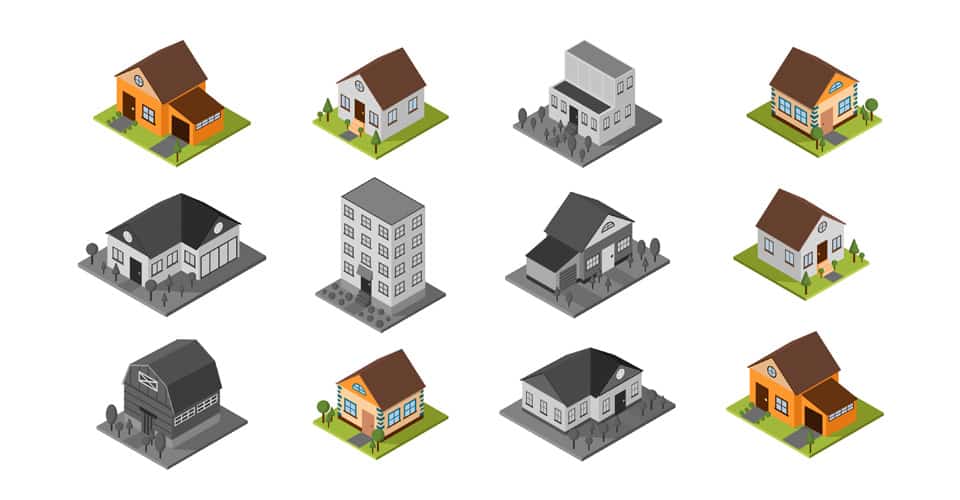










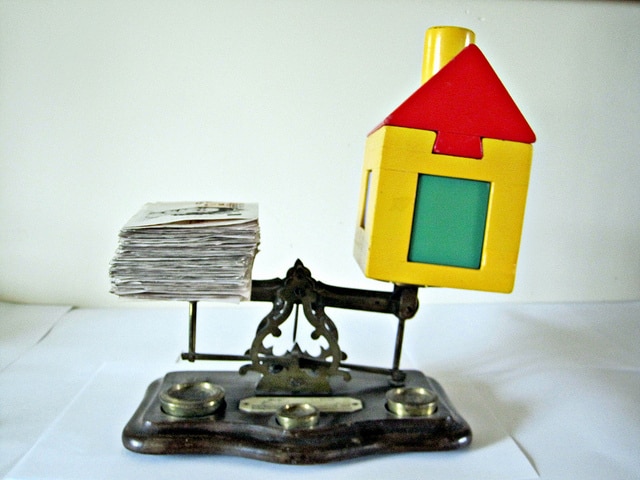













 When it comes to financing for flipping houses, De Meire has used just about every financing avenue available. “There are many ways to acquire and finance property. Don’t limit yourself to the traditional loans for flipping houses. I’ve done it all.”
When it comes to financing for flipping houses, De Meire has used just about every financing avenue available. “There are many ways to acquire and finance property. Don’t limit yourself to the traditional loans for flipping houses. I’ve done it all.”

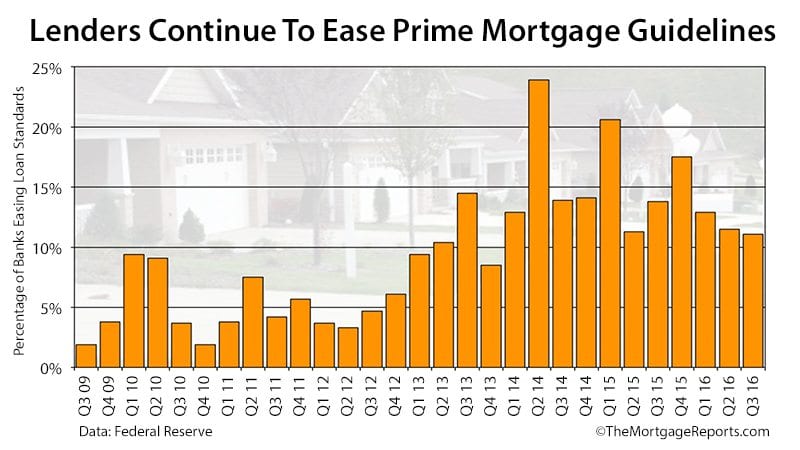
 Once the lender determines how much you can borrow and the interest rate you qualify for, most lenders will provide a letter that states this information. You can show this letter to a real estate agent looking for a home on your behalf, so he or she can guide you to homes in your price range.
Once the lender determines how much you can borrow and the interest rate you qualify for, most lenders will provide a letter that states this information. You can show this letter to a real estate agent looking for a home on your behalf, so he or she can guide you to homes in your price range.









